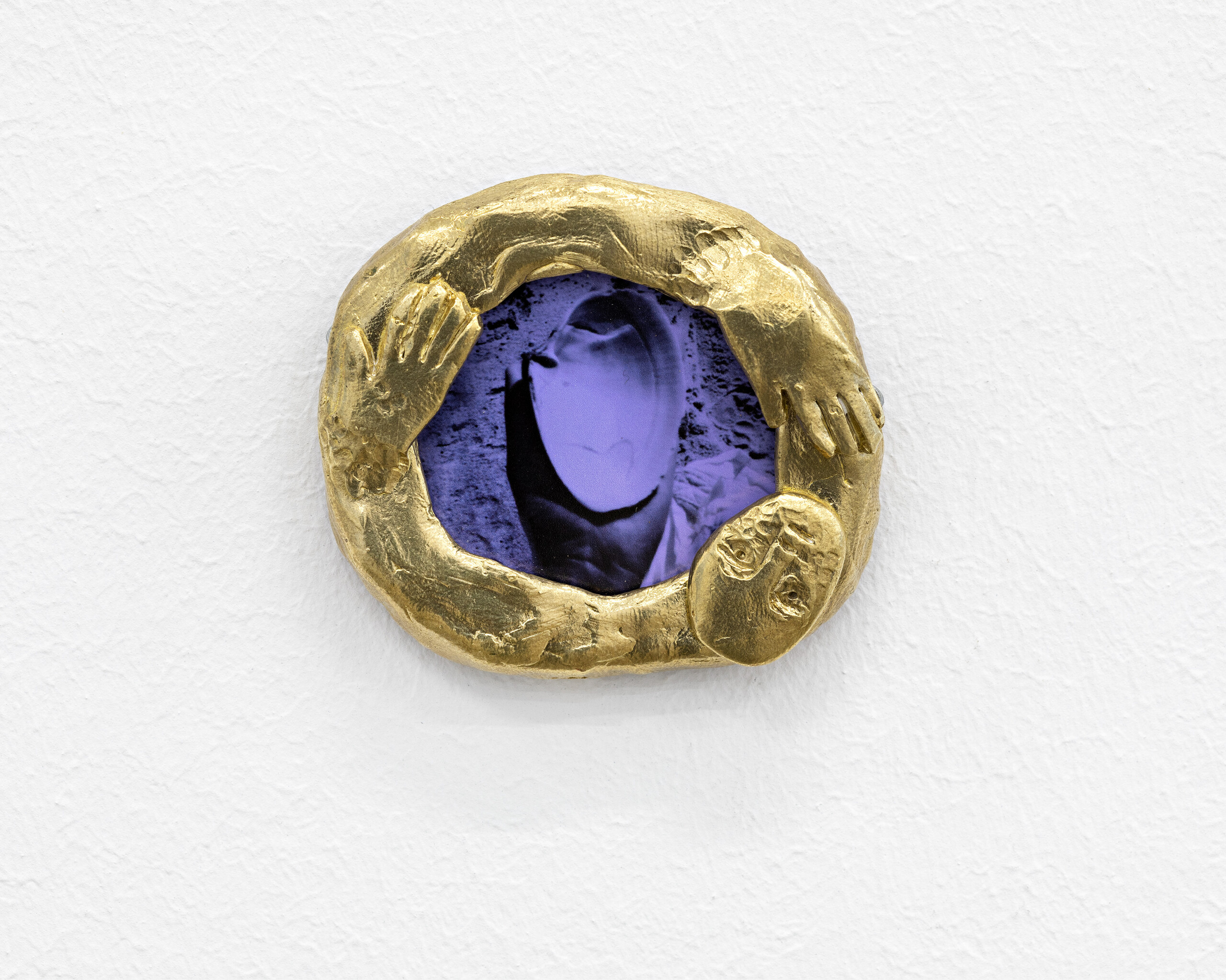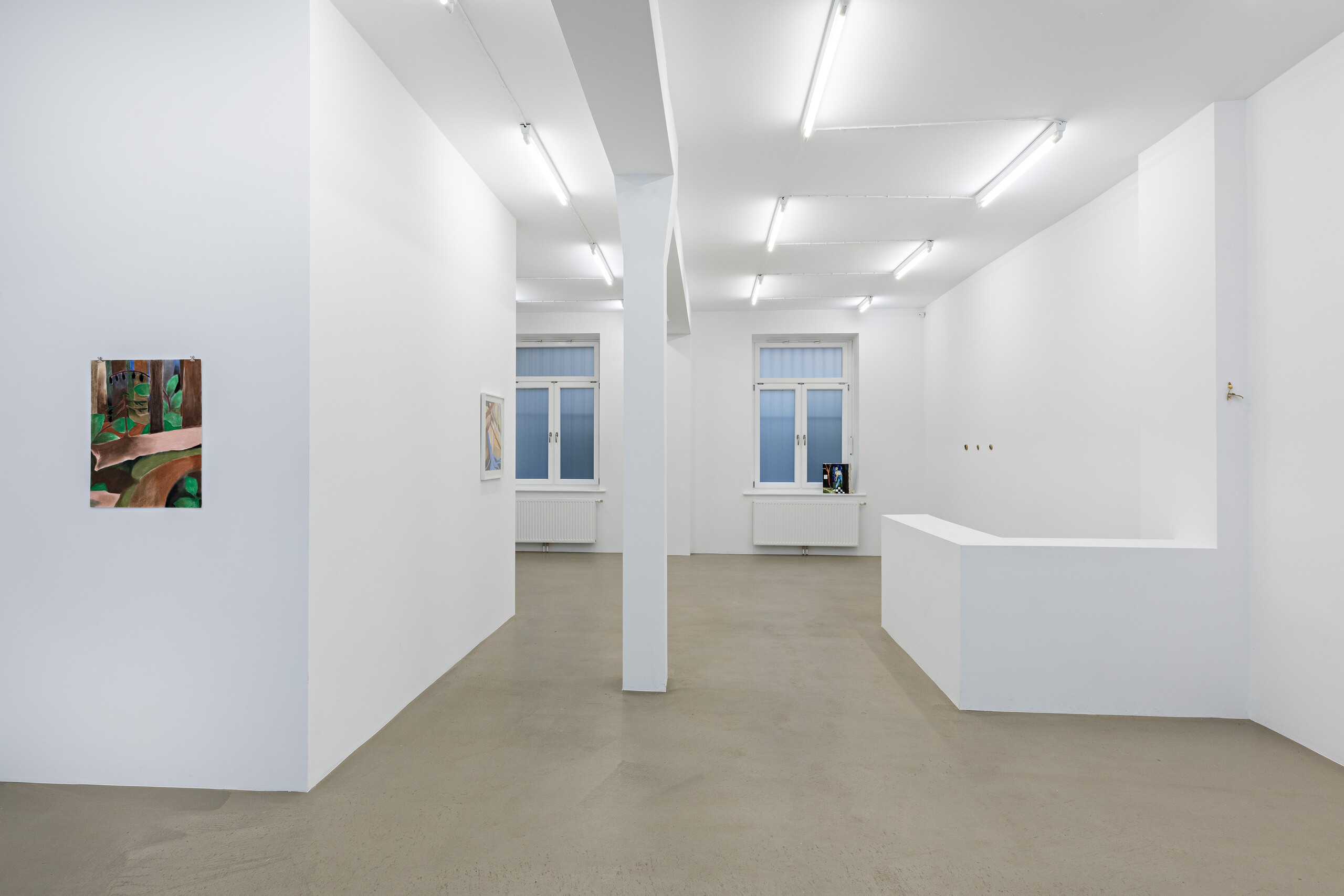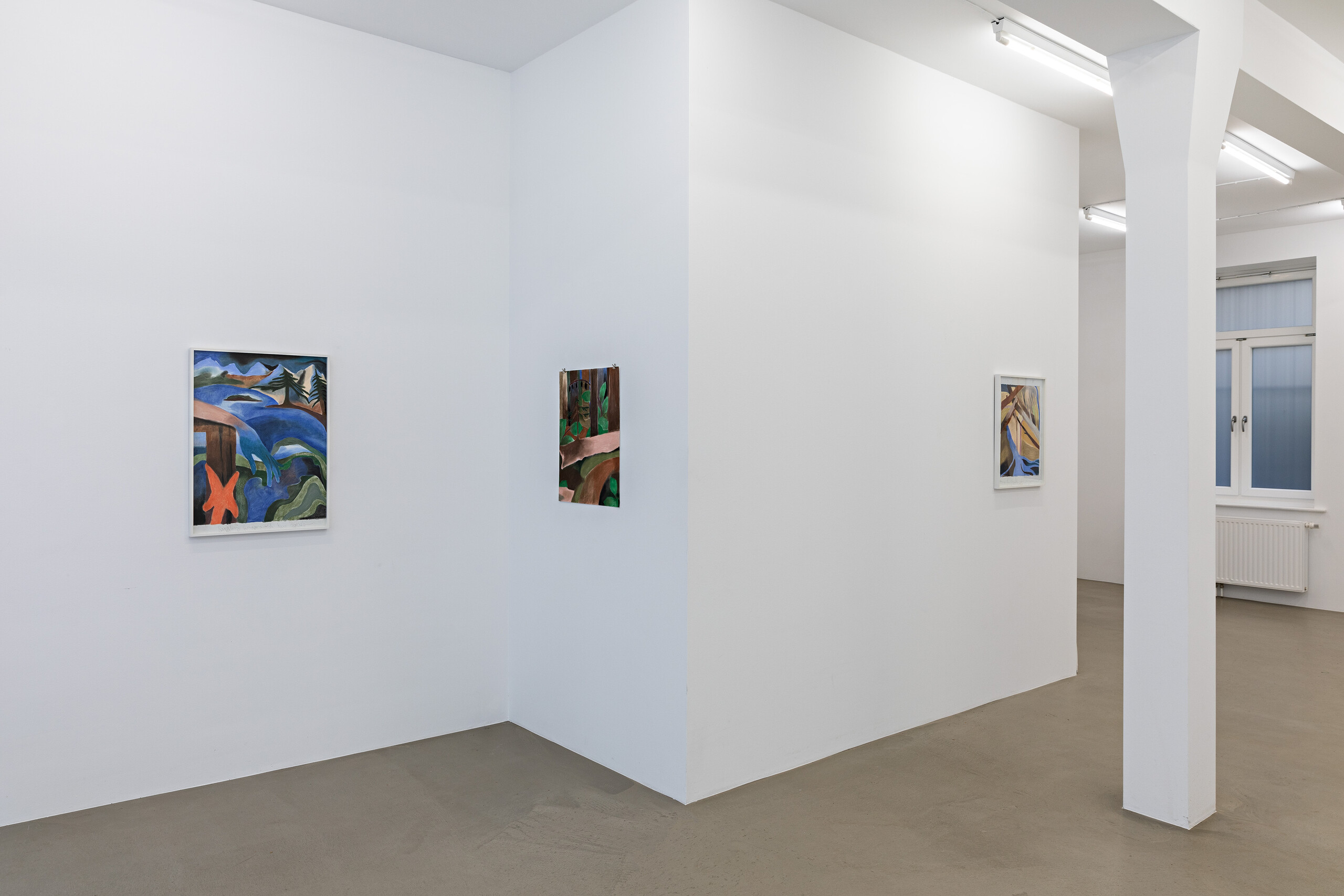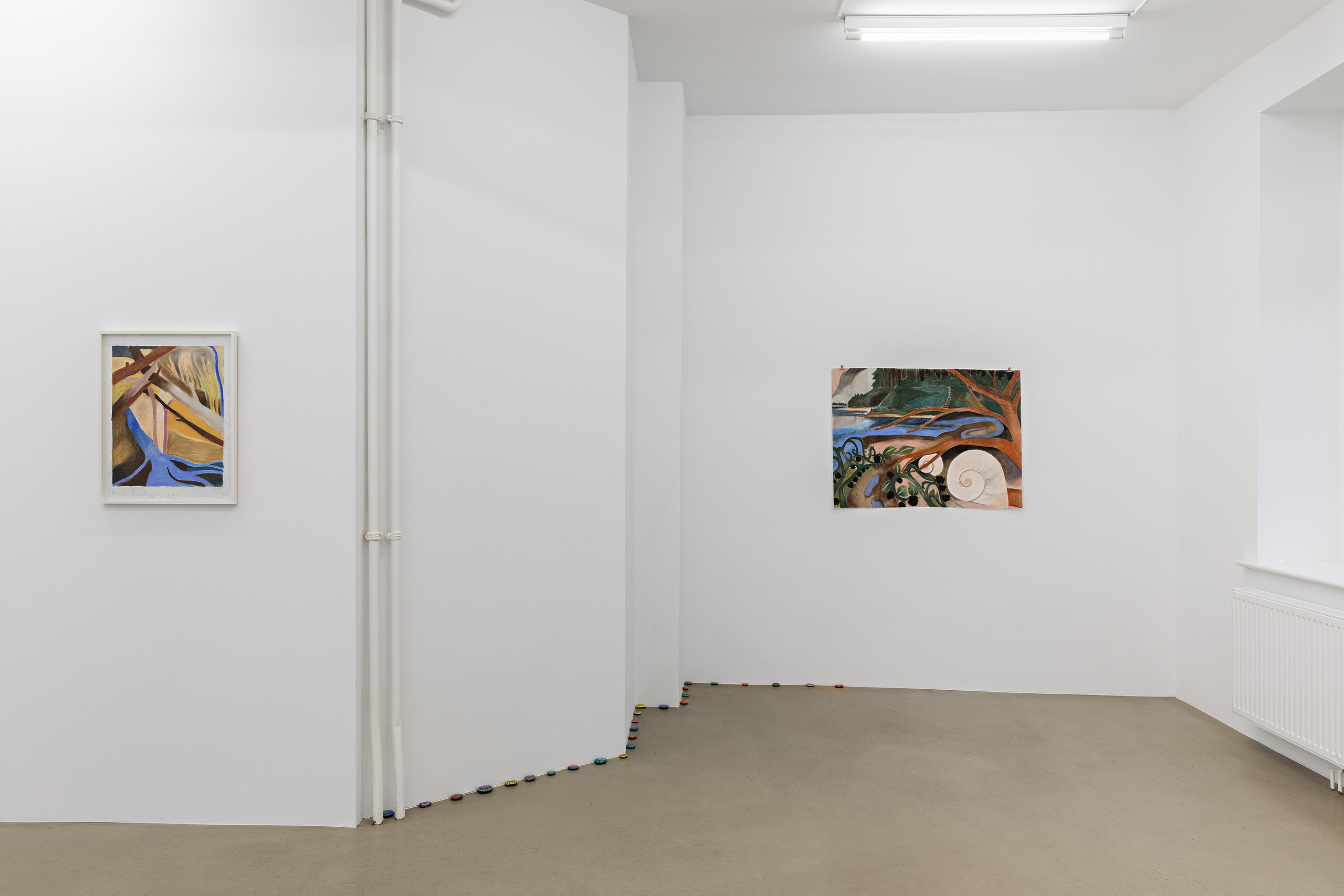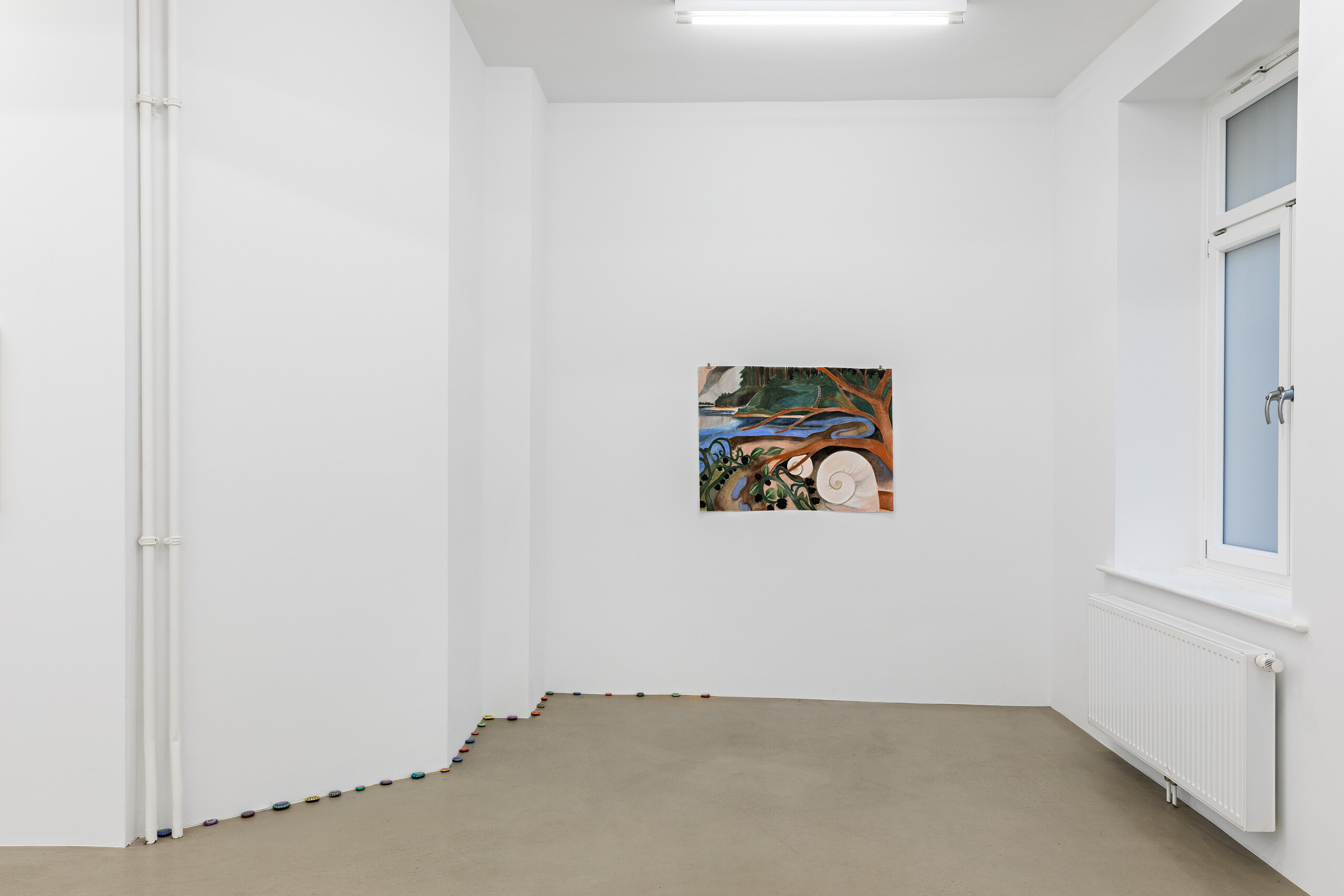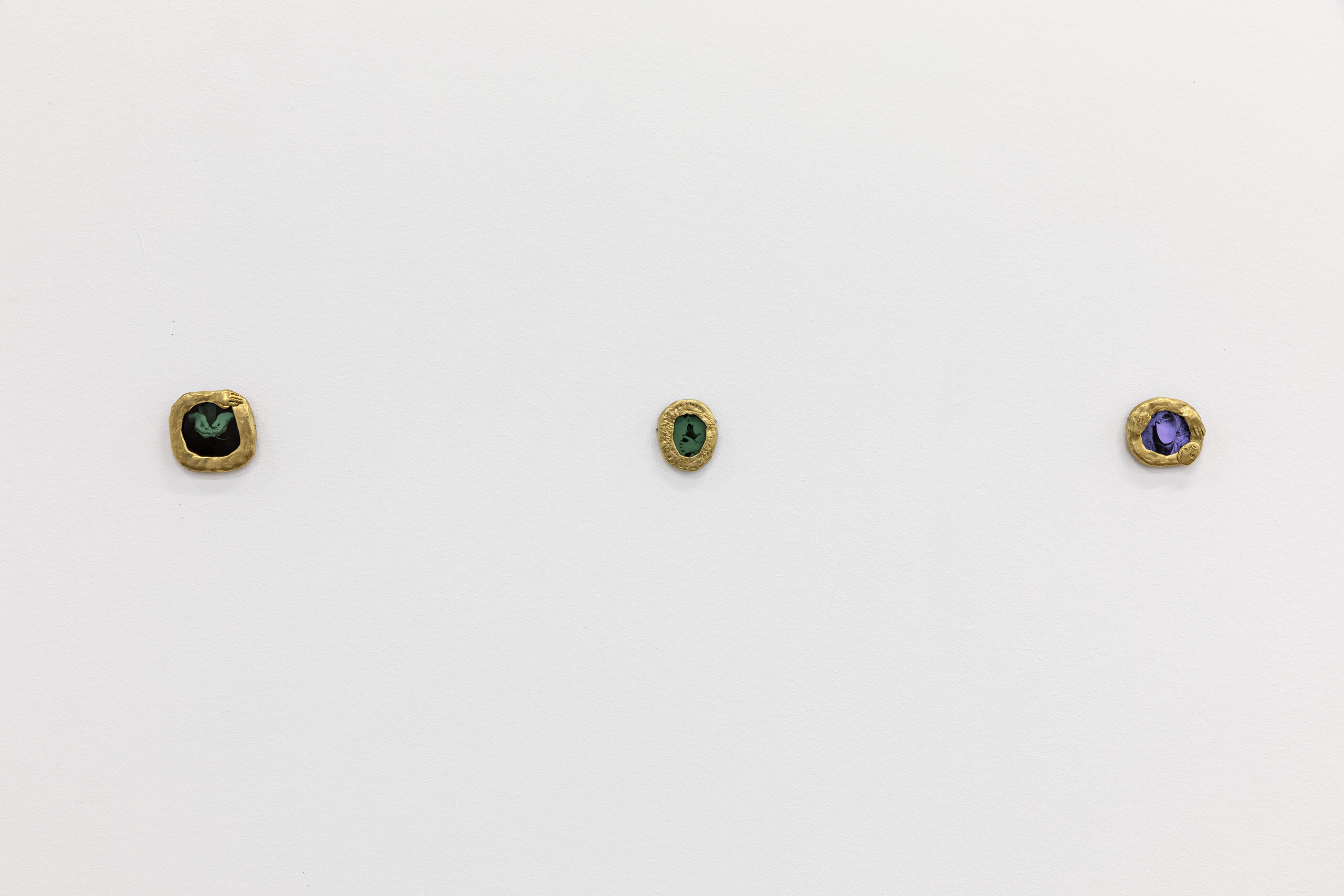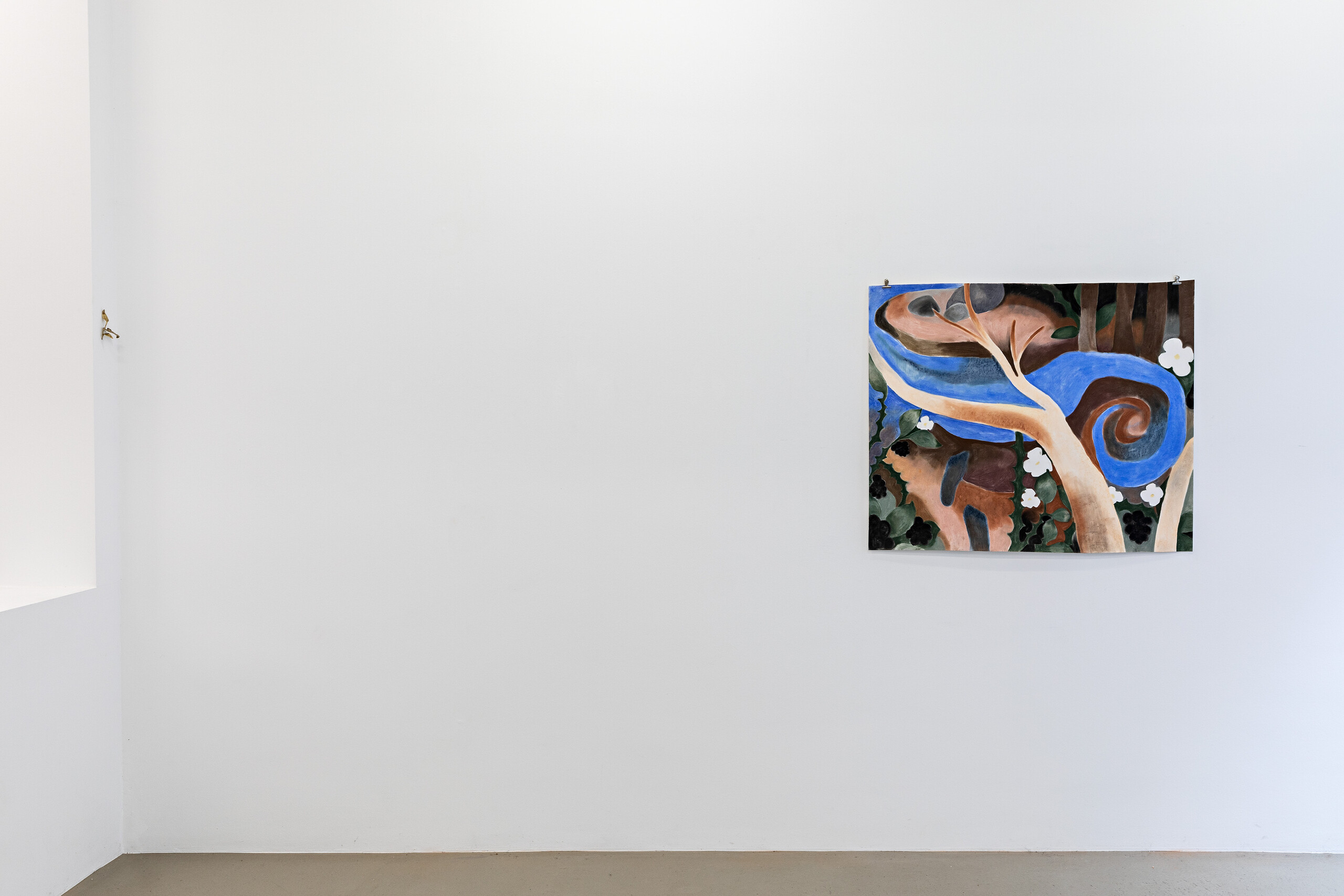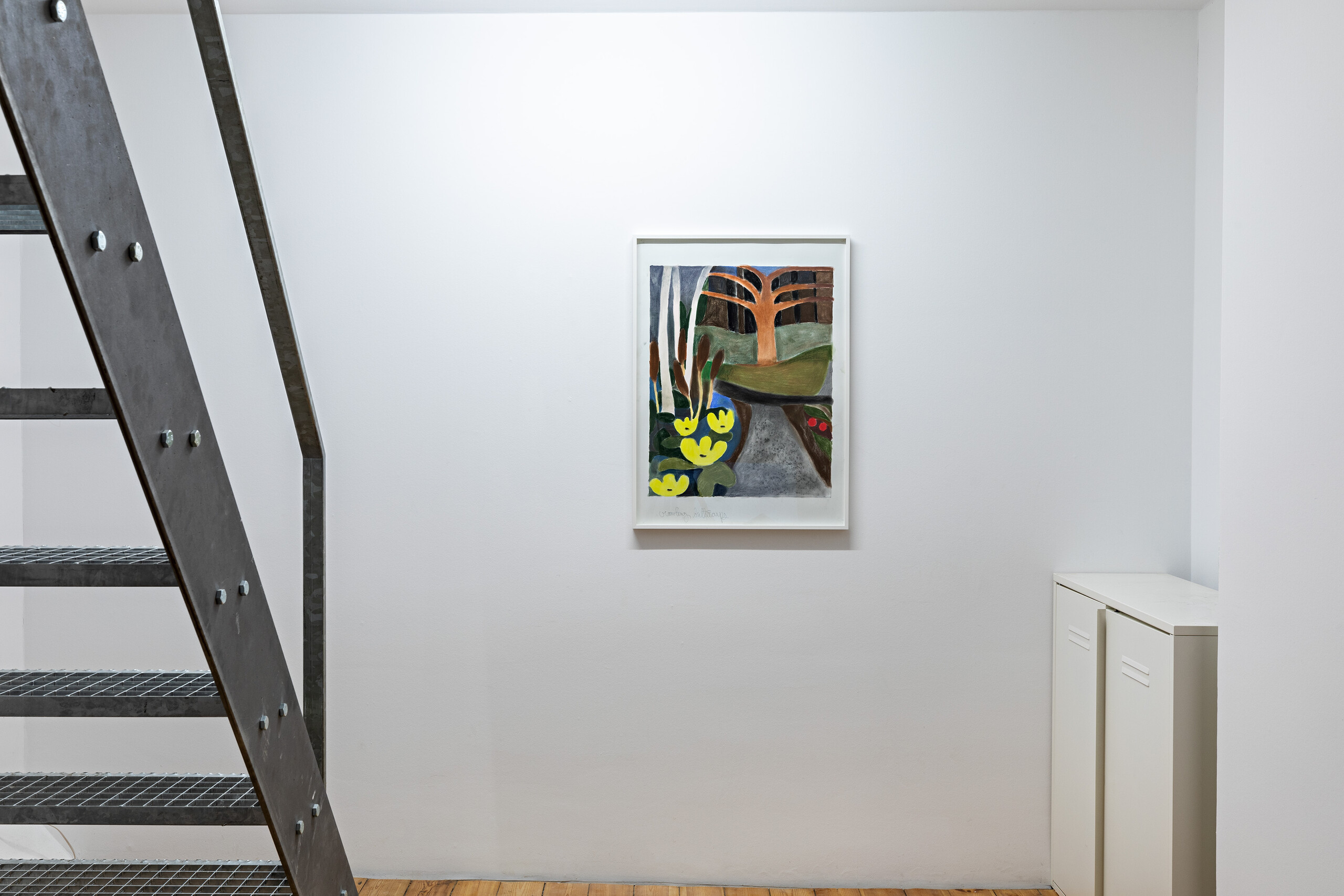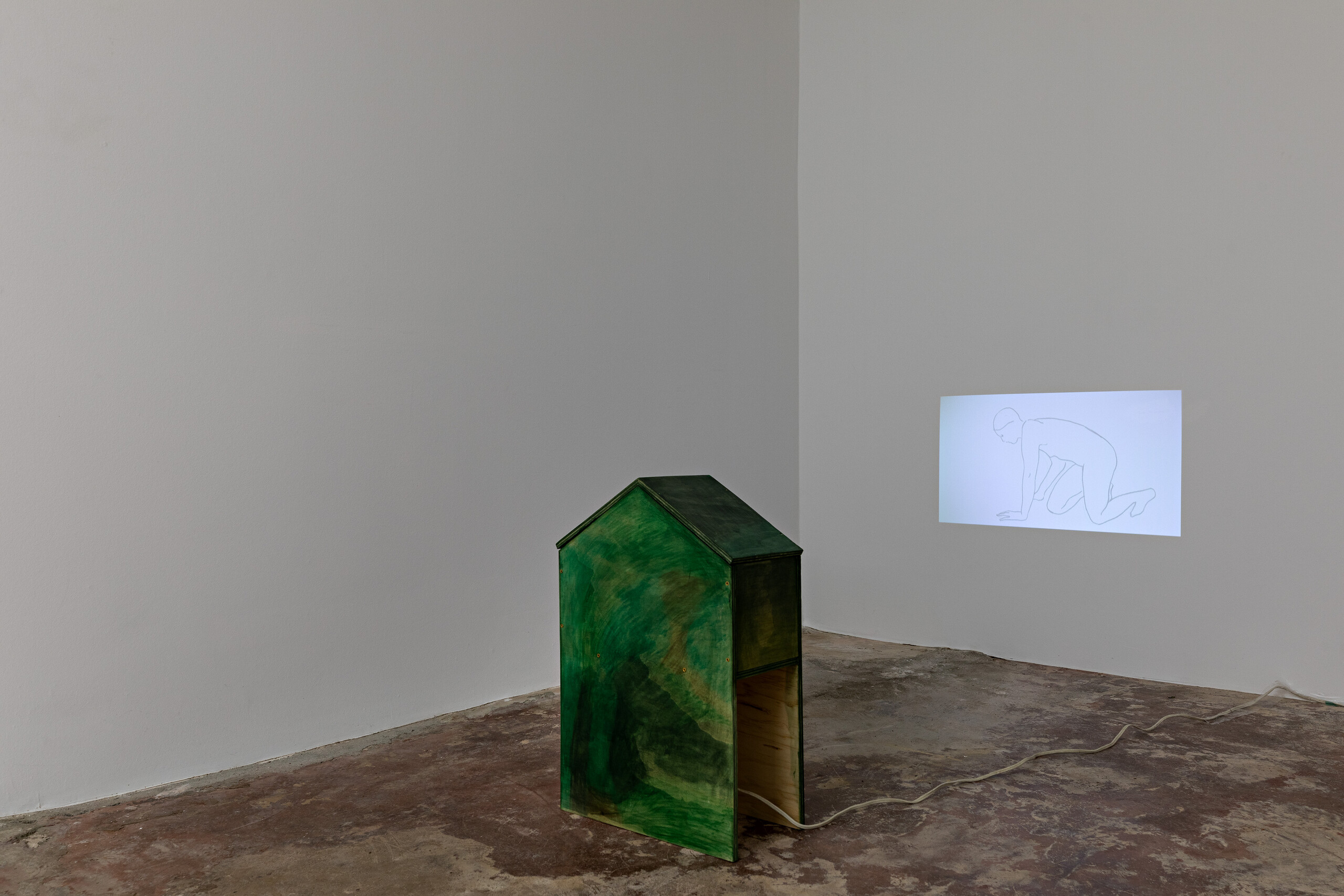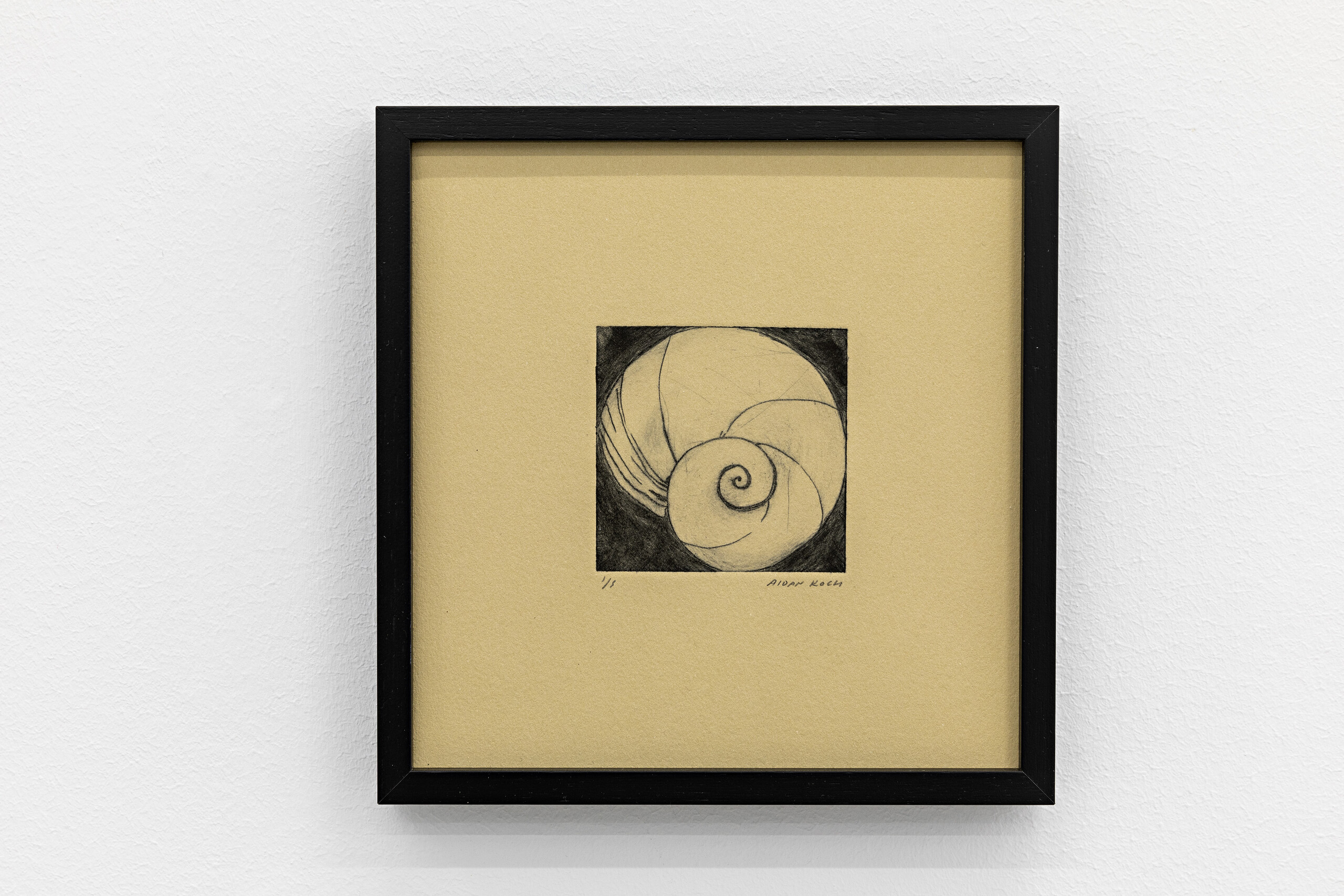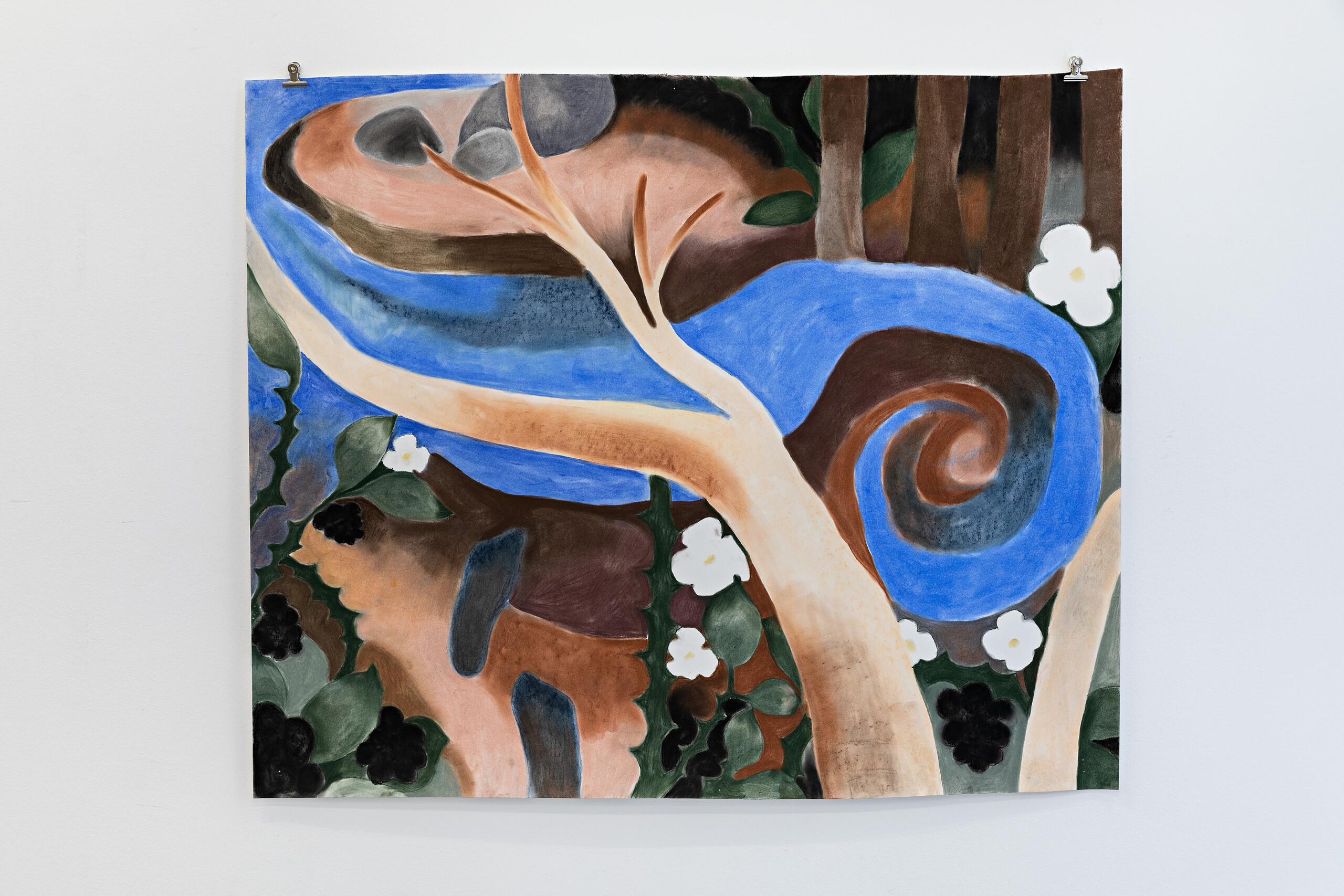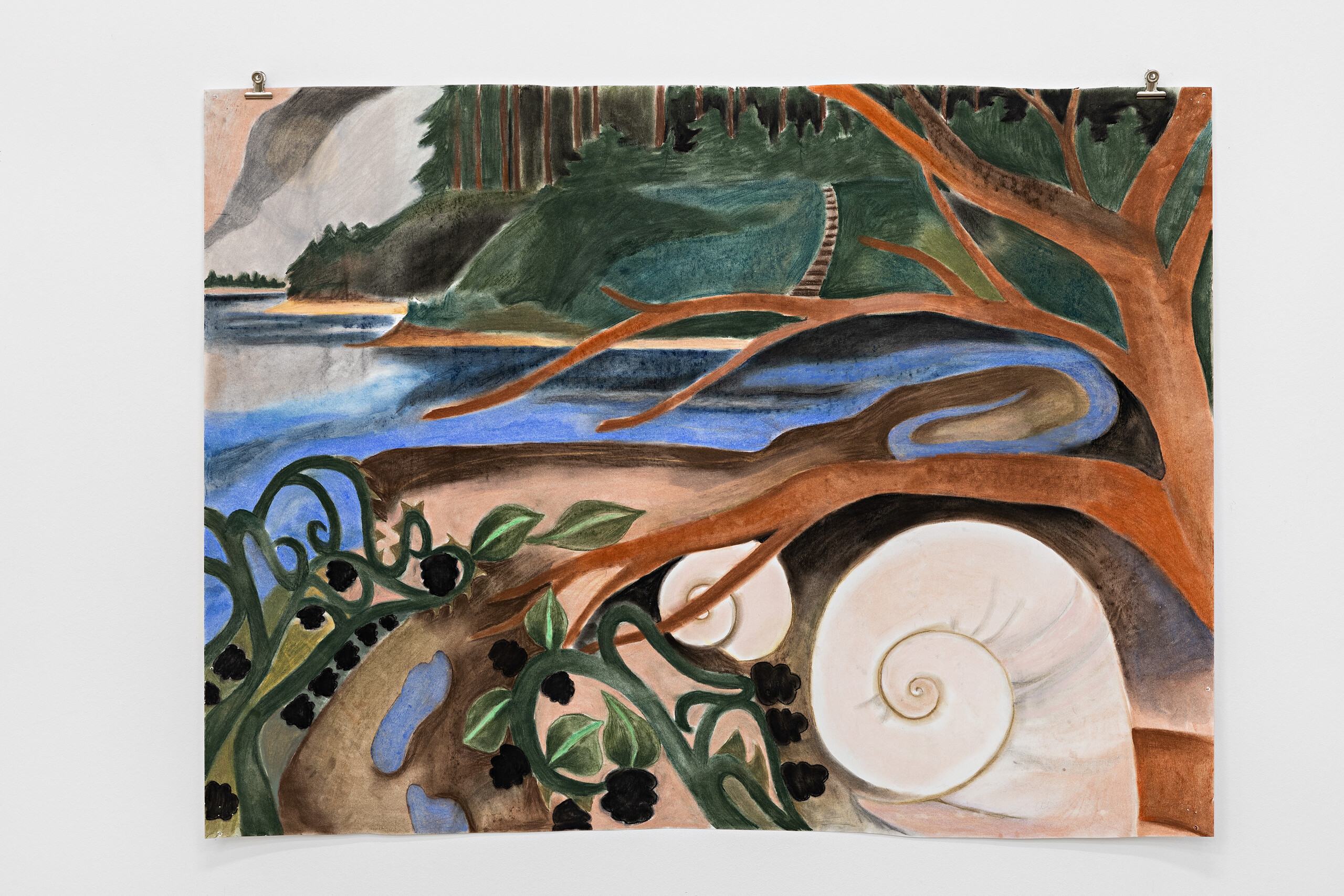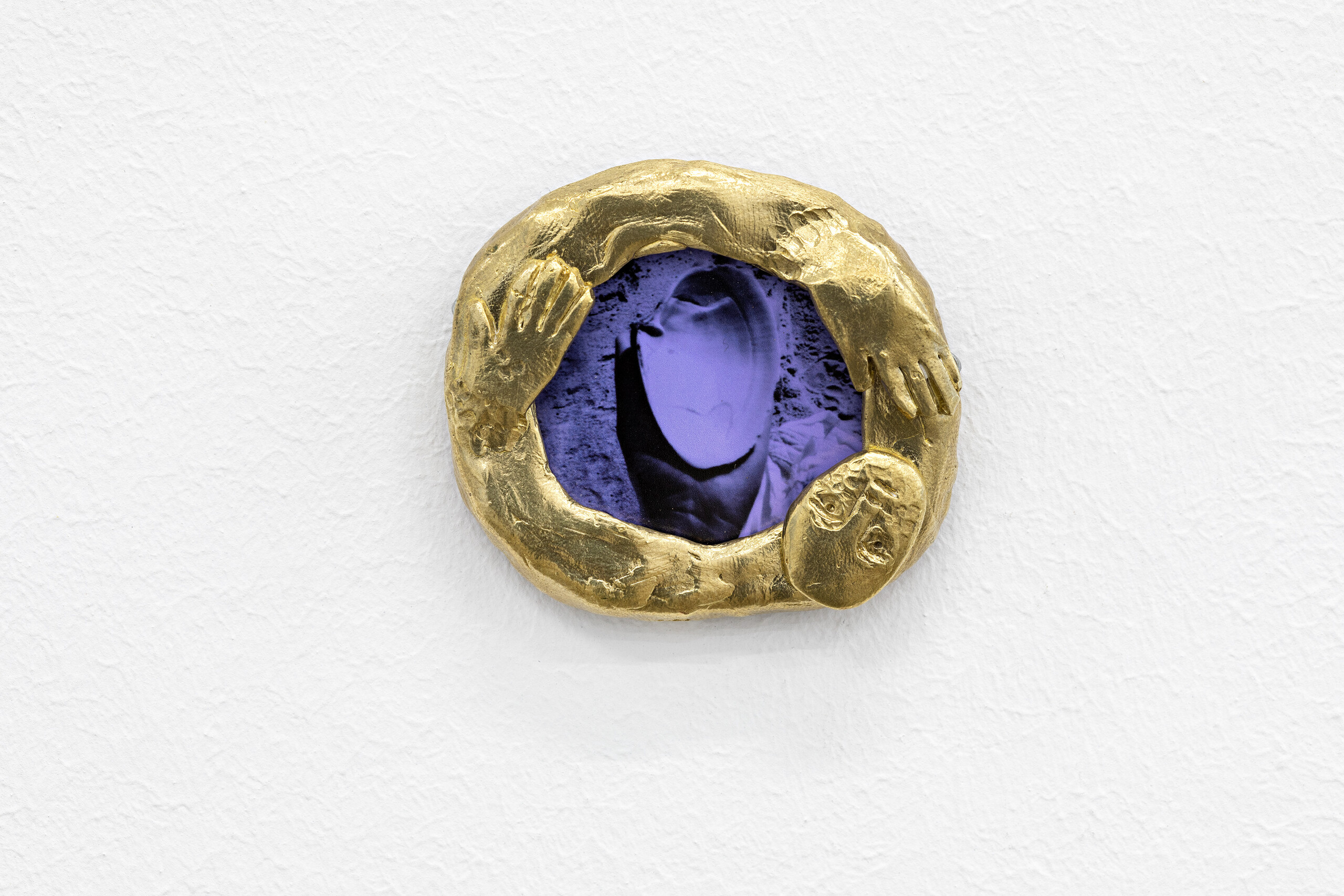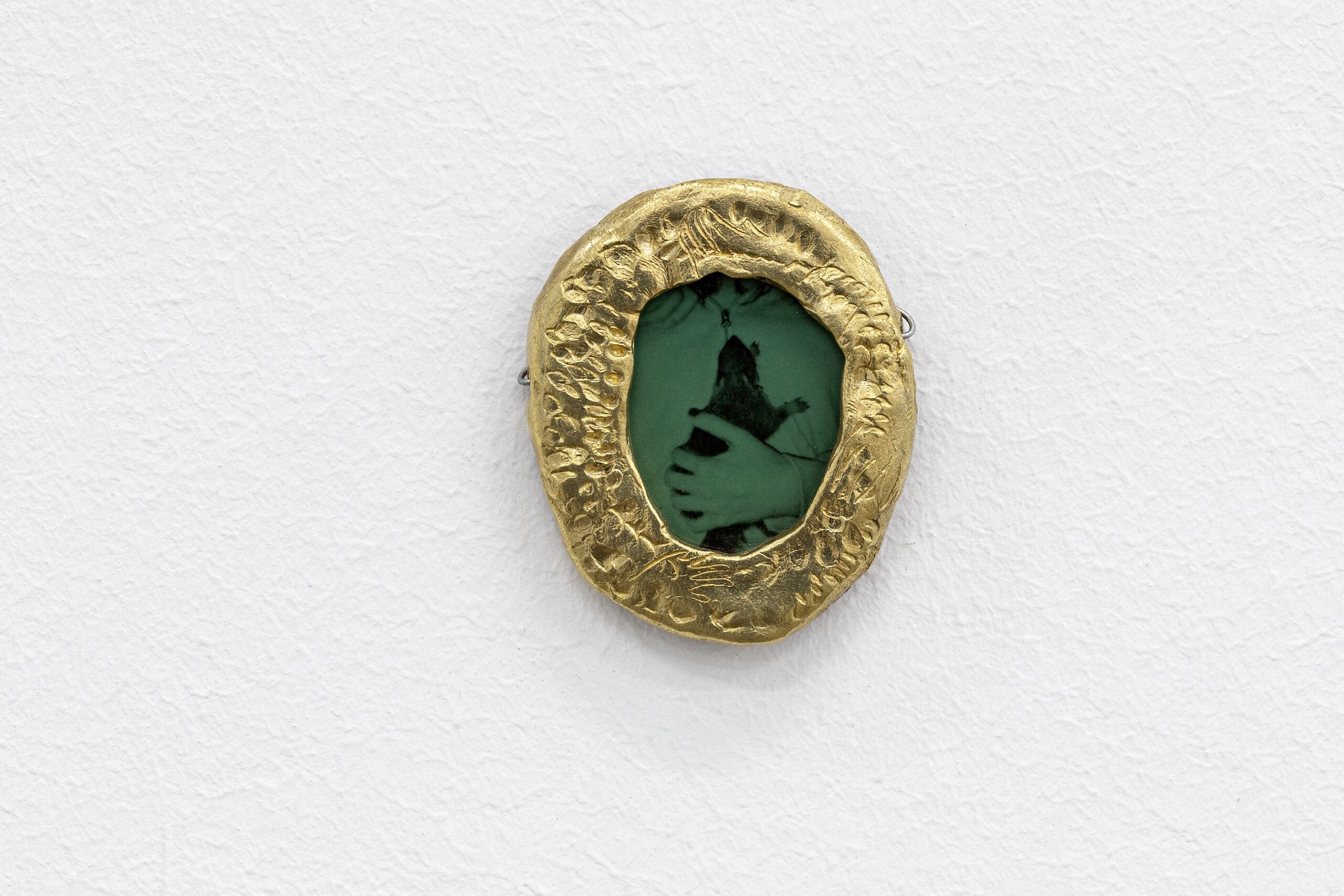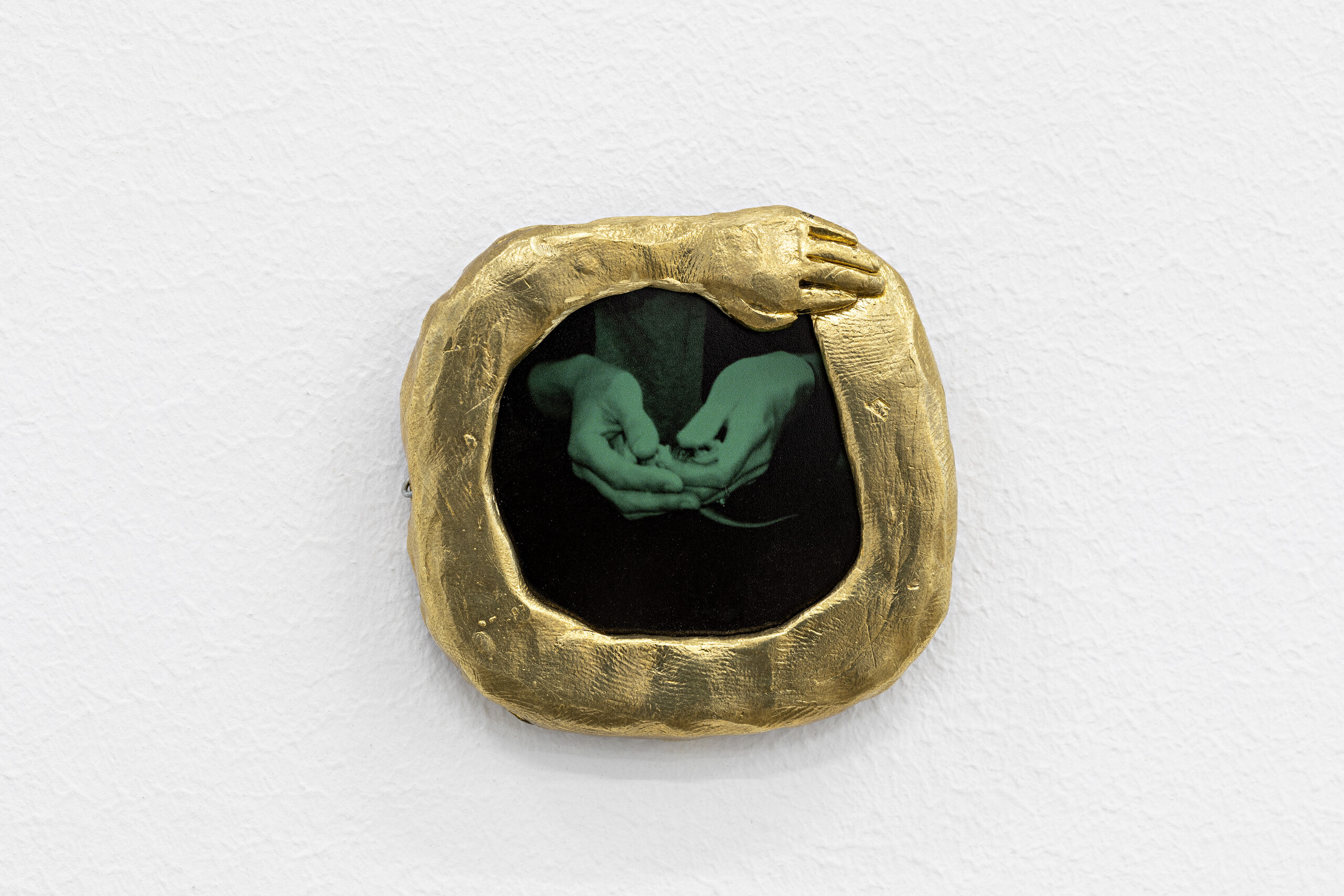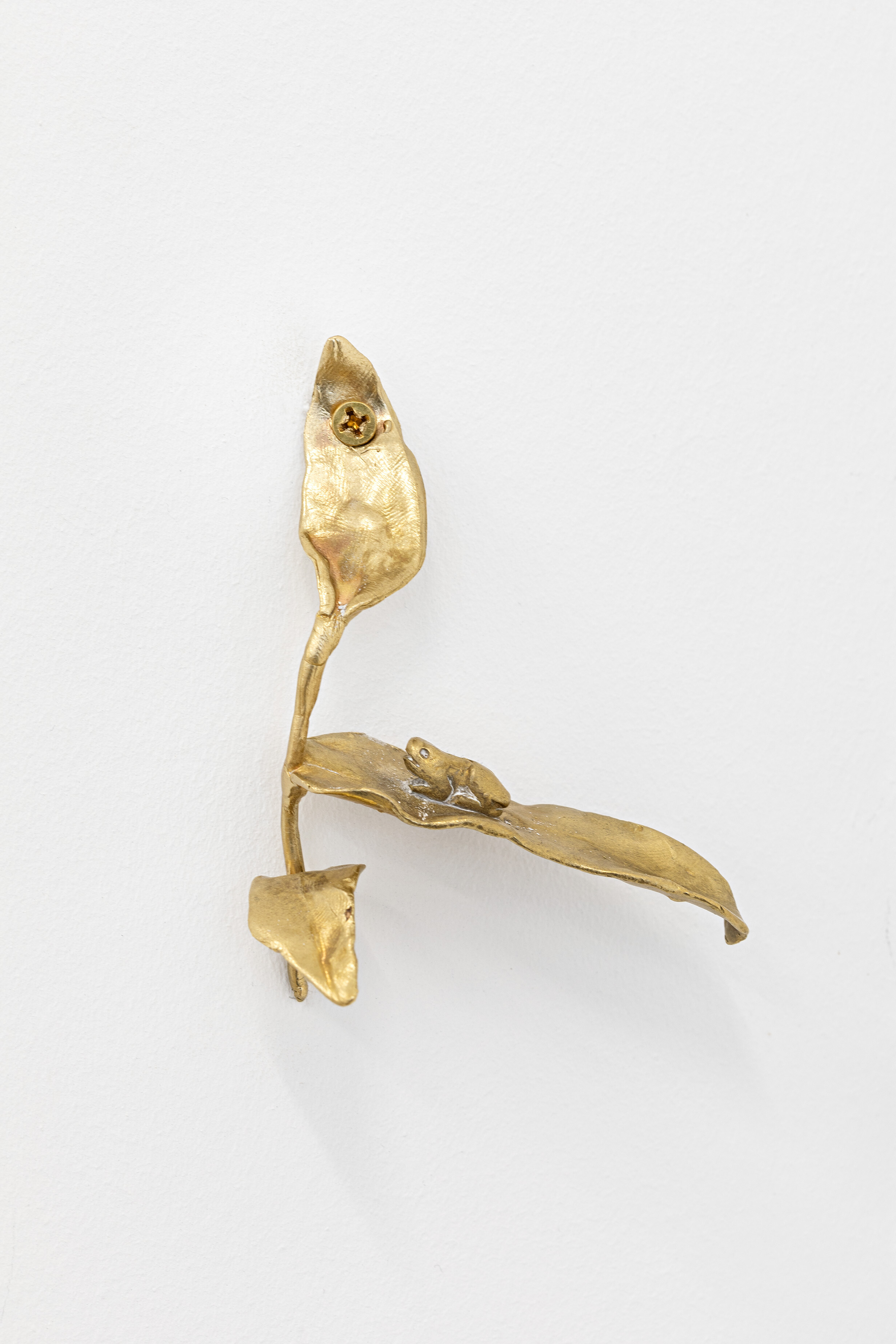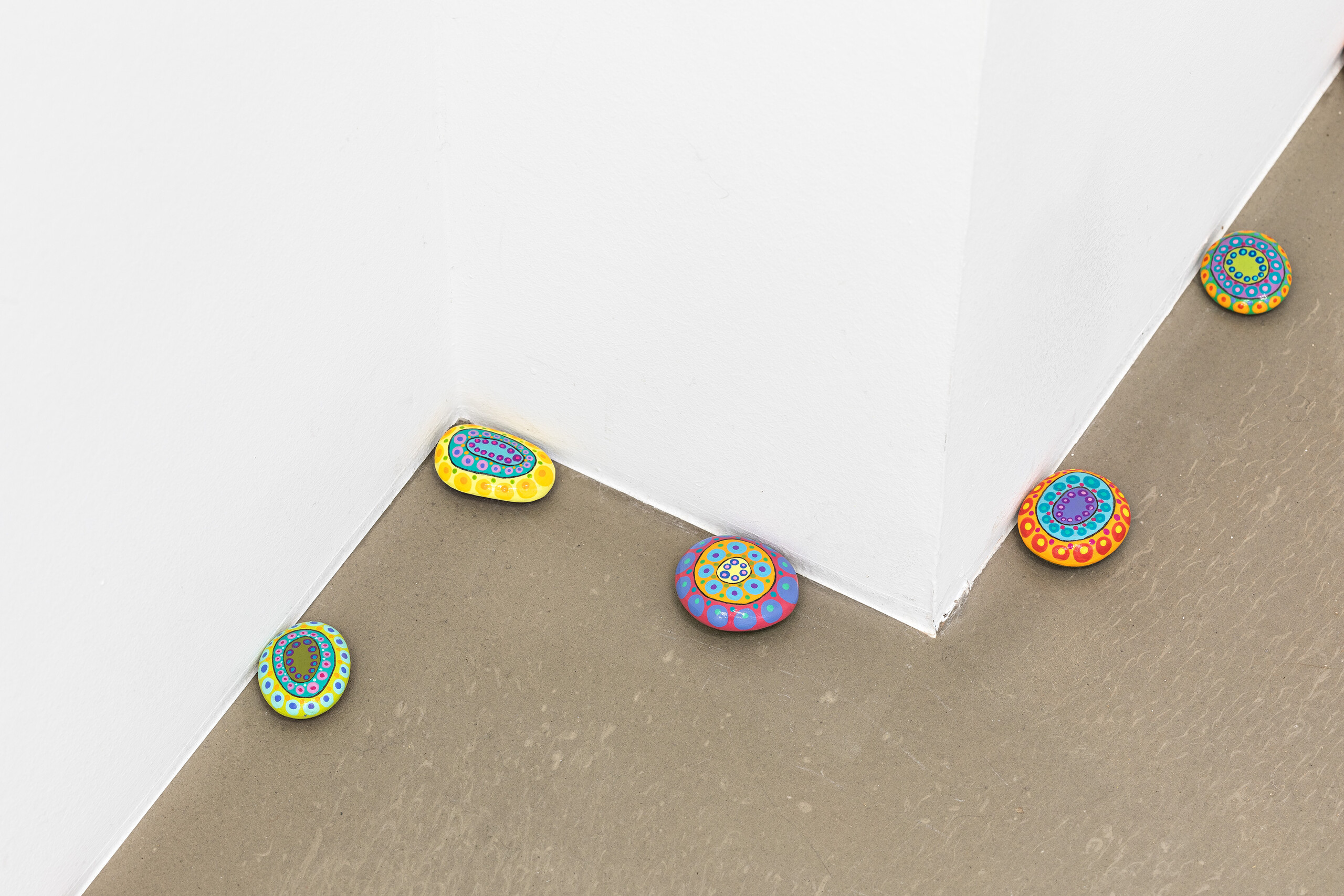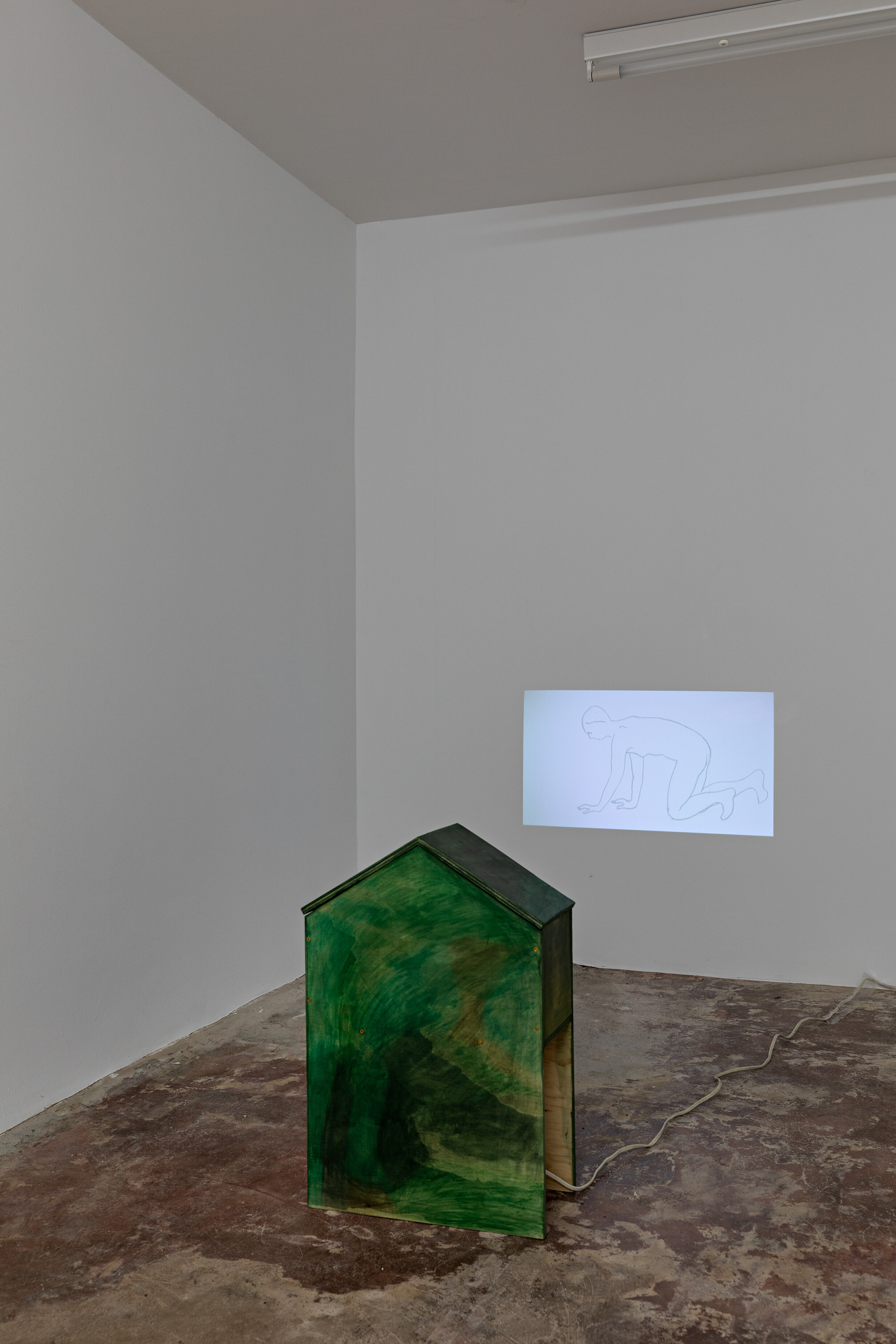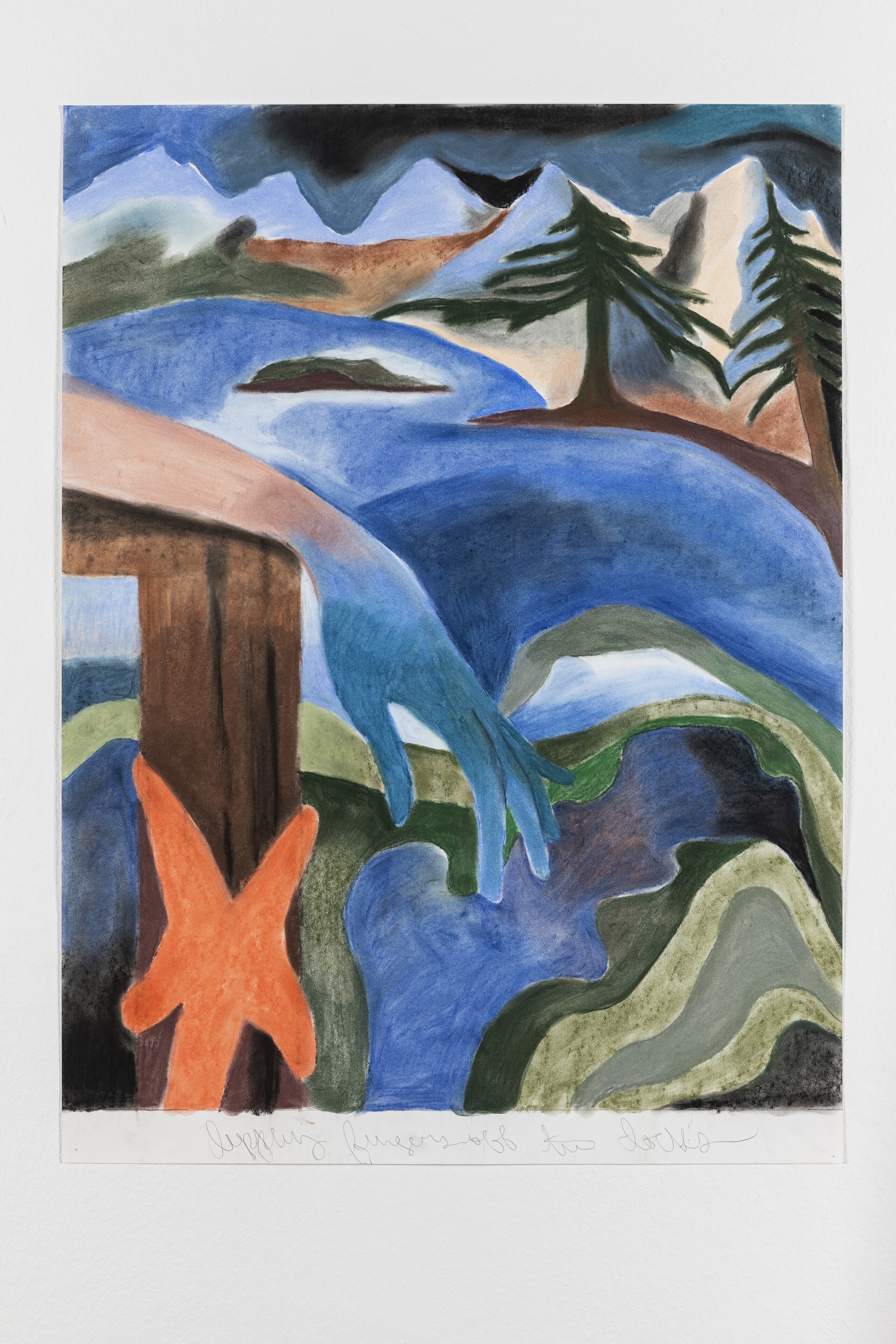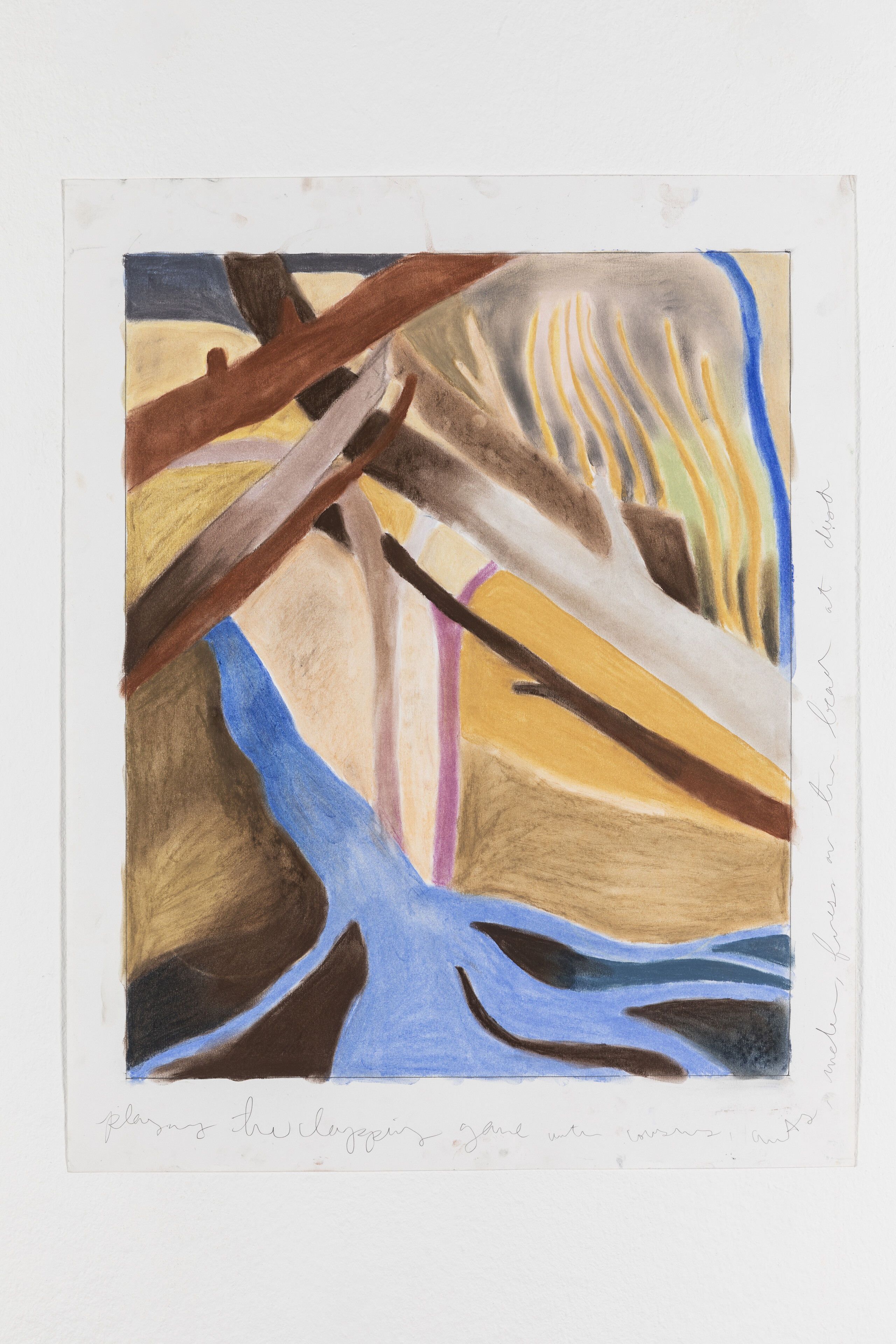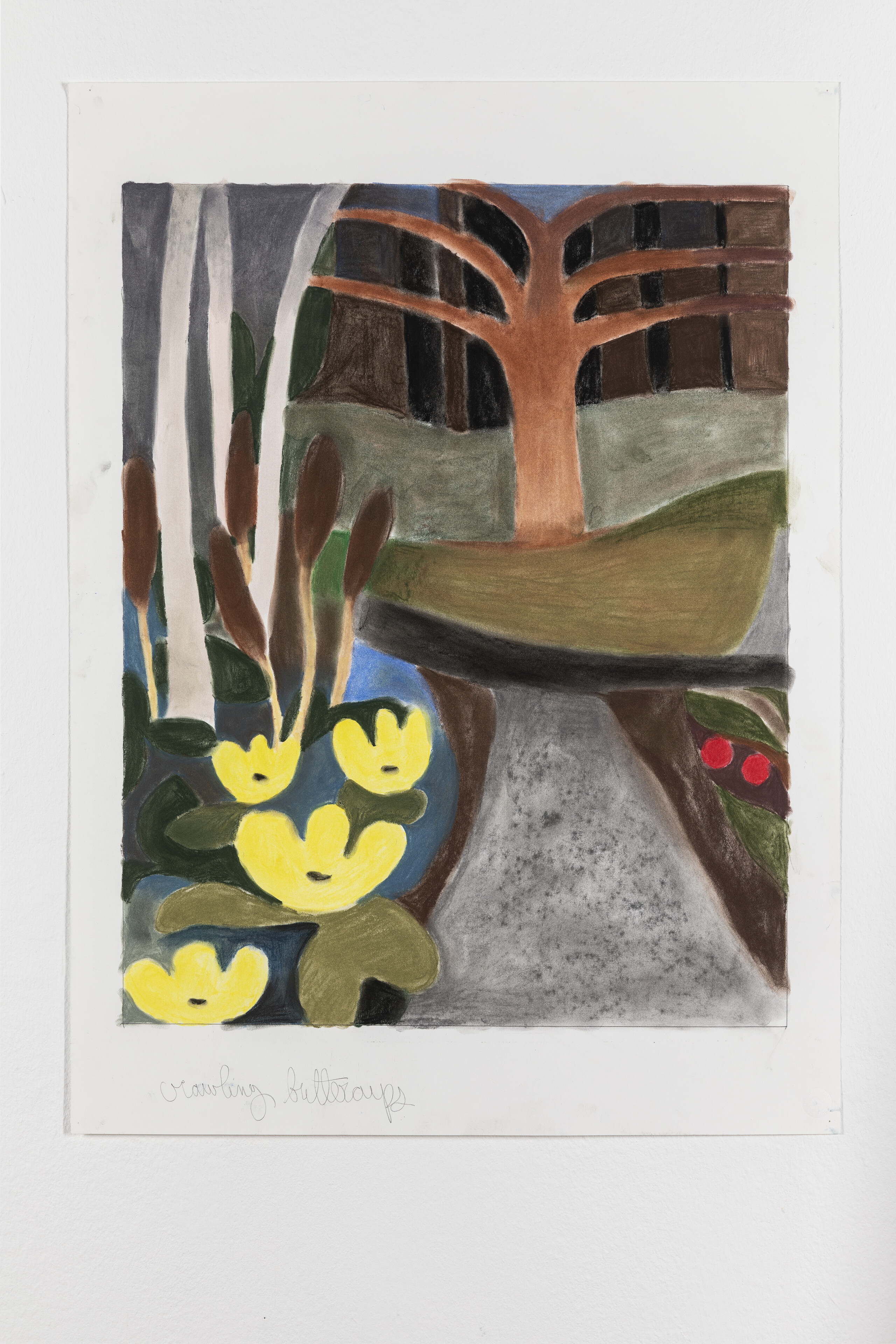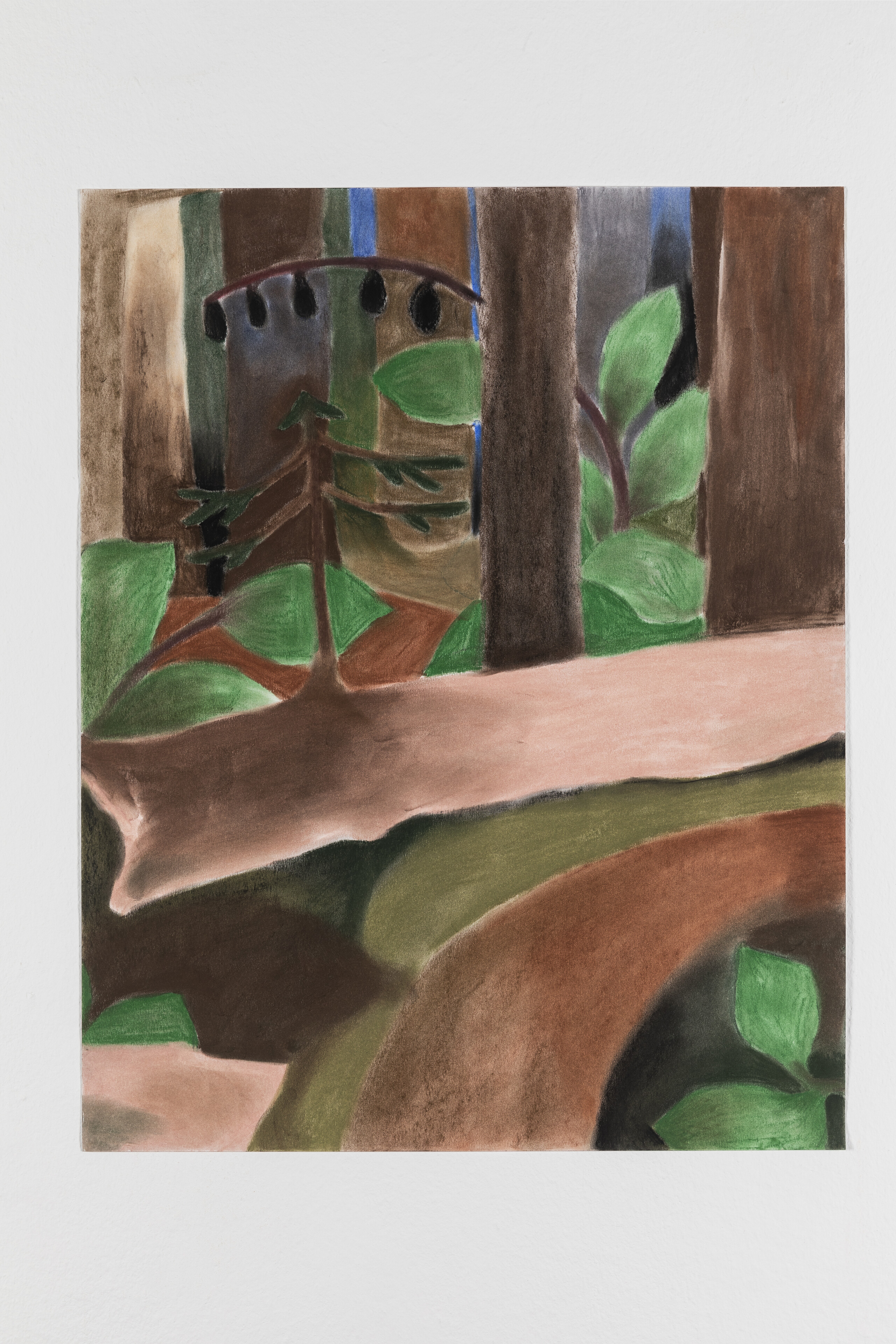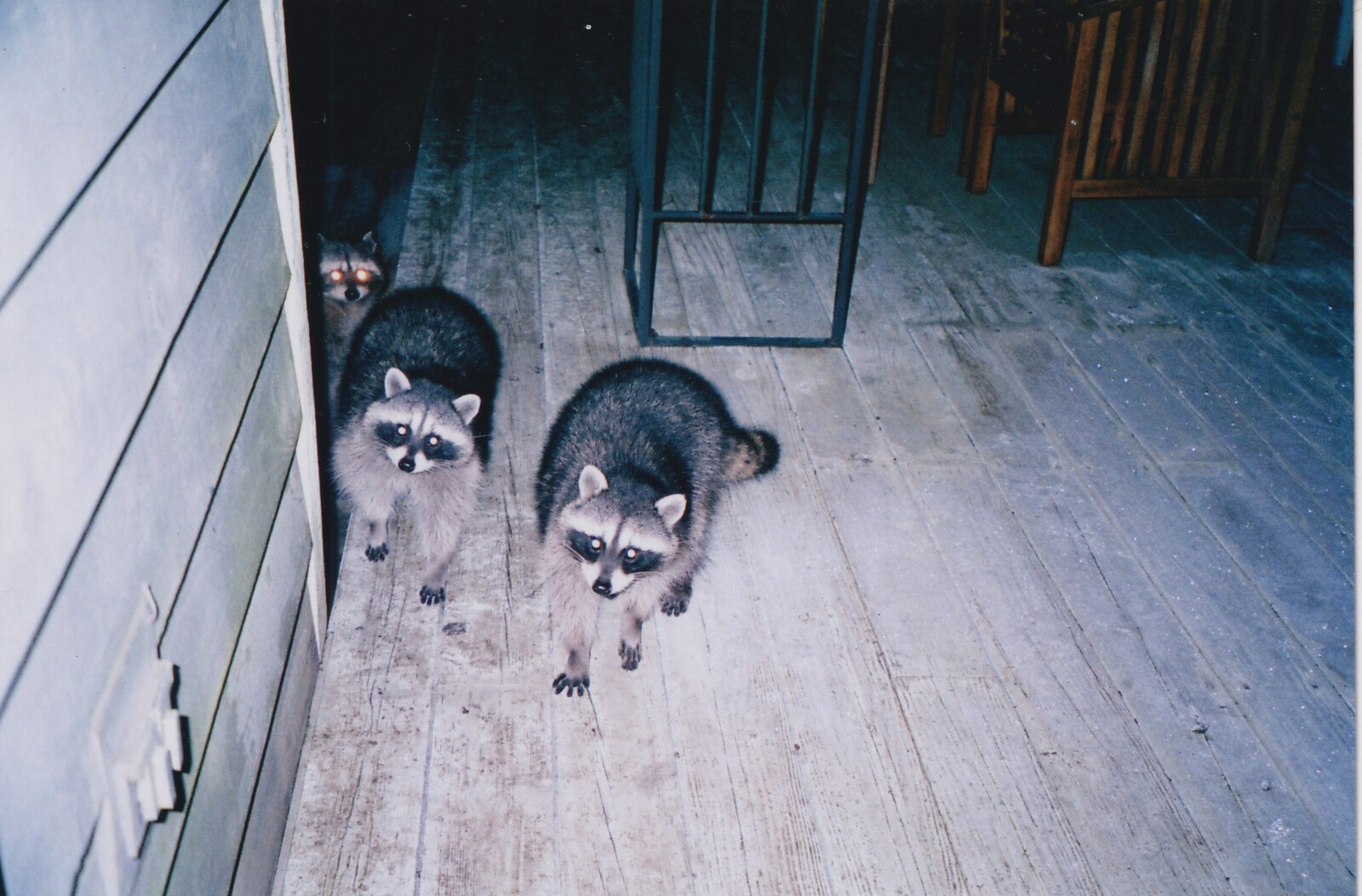The profound desire for friendship and identification with wild animals and the craving to touch them and to share their aliveness is eventually lost, but at the imprinting stage it is experienced with almost painful intensity.
—Miriam Rothschild, Butterfly Cooing like a Dove
'Tides and Trees' explores childhood encounters with the natural world and how they shape our perception of the environment. Koch, who lives and works in Landers, California, in the Mojave Desert, pulls from images and memories of Olympia, Washington, where she grew up.
Through the lenses of conservation and wilding, including ‘shifting baseline’ theory (Frans Vera), the exhibition considers our changing sense of the landscape’s natural or wild state. Koch writes:
'Childhood experiences and memory not only shape attention toward the natural world; they set a baseline for how that world is seen over time. While these encounters can spur us to examine, critique, and act towards preservation of the environment, they can also skew how we define ‘normal’ or ‘desired’ landscapes, affecting how land is managed and how species are valued by communities and individuals. Still, while memory is an imperfect starting point, it’s essential in holding emotional space for the nonhuman world and cataloging change (folk memory) for future generations.'
Across drawing, sculpture, writing, and animation, Koch conjures the intricate beauty of the Pacific Northwest coast, probing the details she remembers, as well as the gaps.
Large-scale pastels in saturated hues capture a robust ecosystem of species, from twisting Himalayan blackberry vines to broad-leafed madrone trees.
A series of intaglio prints consider our instinctive urge to touch wildlife. Held beings—an adopted squirrel, a smooth shell—are doubly embraced by sculptural, hugging frames.
In the hand-drawn animation Frog Girl, a person crawls on all fours, in tune with their animal self through play and imagination.
The exhibition also features works by Katie Koch, Koch’s mother, tracing a lineage of care for animals and creative engagement with materials from nature that has been passed down through generations.
Throughout Koch’s wide ranging, multimodal practice is the artist’s intricate and skillful narrative weft, which links human and non-human timescales. Imbued with a naturalist’s close observation and a strong graphic sense of sequence and relation, the works here recalibrate our attention to biologic and geologic rhythms–from the ebb and flow of tides at the Budd Inlet to the diphasic call of the Pacific chorus frog. Attuned to the perspectives of nonhuman lives and landscapes, they cut to the heart of the artist’s practice: exploring the existential tensions of coexistence.
– Chantal McStay
